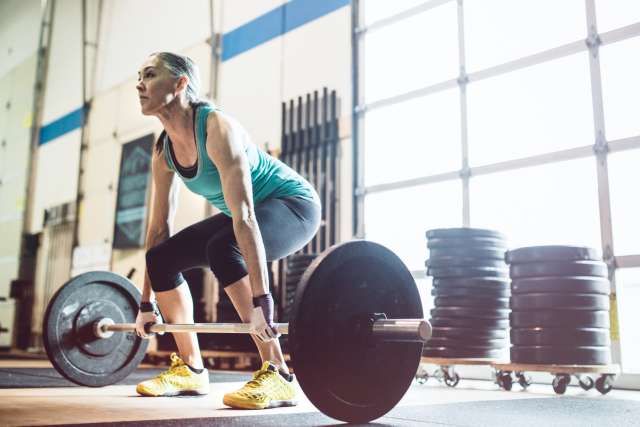It’s no secret that your body goes through some pretty significant changes before, during and after menopause. You may notice weight gain, an increase in fat (especially around your middle) and a decrease in muscle strength — just to name a few things.
The good news is that exercise can help you cope with all those changes. The key is making sure you’re doing the right kind of exercise. Learn about the best types of exercise for menopause so you can stay fit through your 50s — and beyond.
Why strength training is critical when exercising after menopause
As we get older, it’s natural to lose some muscle mass. Research [PDF] has shown that this loss starts as early as our 30s. From 30 to 50, adults lose between 3% and 8% of their muscle mass per decade. Starting at age 50, muscle loss speeds up, and you lose 5% to 10 % of your muscle mass each decade.
For women, the drop in estrogen that comes with menopause makes these changes in body composition even worse. Not only do we lose muscle faster post-menopause, but we also tend to gain more fat.
The only way to slow the process and maintain — and even gain — muscle after menopause is to strength train. Lifting weights builds muscle, increases strength and even helps with balance and agility.
You can strength train using machines at the gym, free weights, resistance bands or even your own body weight. If you’re new to strength training, consider working out with a personal trainer or taking a class to learn techniques that will help you safely build muscle.
How weight training aids menopause weight loss
You probably think you need to do more aerobic exercise if you really want to burn calories and lose weight. It’s true that a cardio workout (anything from a brisk walk to a fast run) can burn several hundred calories per hour.
But strength training can help you lose or maintain weight in other ways. More muscle mass leads to a higher metabolism. The higher your metabolism, the more calories you burn — even when you’re resting.
When you try to lose weight without strength training, some of the pounds you lose may be in the form of muscle mass. Adding in a few weightlifting sessions per week will help you maintain muscle while losing fat instead.
Impact exercises boost bone health
Bone loss is another unfortunate side effect of the drop in estrogen at menopause. The best way to minimize bone loss? You guessed it — exercise. In particular, exercise that comes with some impact.
When you put stress on your bones, they respond by bulking up their density. Having better bone density as you get older lowers your risk of osteoporosis and broken bones.
Taking a walk, dancing or playing a game of pickleball can all help keep your bones healthy. But higher-impact activities — like running, jumping rope or doing jumping jacks — can do even more to boost bone strength.
Yes, you still need some cardio
While it’s a good idea to step up your strength training after menopause, it’s not smart to completely ignore aerobic exercise. You still need to run, walk, swim or do whatever gets you moving.
There’s some evidence that high-intensity interval training (better known as HIIT) might be the best way to get your cardio after menopause. HIIT involves alternating periods of higher-intensity activity with periods of recovery.
HIIT workouts may help you lose belly fat, which can lower your risk of diabetes, heart disease and other health conditions.
A HIIT workout can be adapted to any fitness level. If you typically walk for exercise, mix in several 30-second spurts of speed walking. If you run, turn those intervals into sprints.
It may take a little more work to stay fit after menopause, but with the right types of exercise, you can get stronger at any age.



